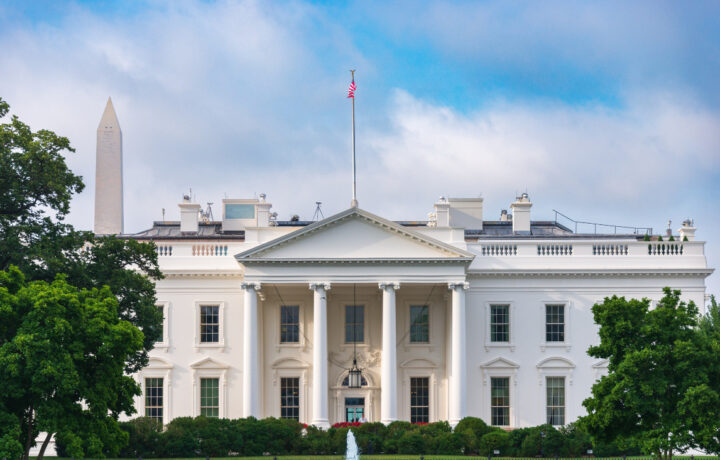President Donald Trump said that the United States could begin nuclear weapons testing for the first time in decades. The president argued that other nations have continued to do so, leaving the U.S. at a disadvantage.
“We’ve halted many years ago, but with others doing testing, I think it’s appropriate to do so,” the president told reporters aboard Air Force One.
Critics were quick to respond, noting that the United States had previously conducted 1,030 nuclear test explosions since 1945, the majority of the 2,056 nuclear tests carried out worldwide.
“Trump appears to be misinformed and out of touch. The U.S. has no technical, military, or political reason to resume nuclear explosive testing for the first time since 1992, when a bipartisan majority of the U.S. Congress mandated a nuclear test moratorium. It would take, at least, 36 months to resume contained nuclear testing underground at the former Nevada Nuclear Test Site outside Las Vegas,” said Daryl G. Kimball, executive director of the Arms Control Association (ACA), in a statement to the media.
Where Could The Tests be Carried Out?
Currently, the only place that the United States could carry out a nuclear test would be the Nevada National Security Site, which is approximately northwest of Las Vegas. This won’t be a throwback to the “nuclear tourism” of the 1950s that occurred at the Nevada Test Site, and there won’t be any massive mushroom clouds in the skies outside of Sin City.
Instead, the NNSS, which at approximately 1,300 square miles is larger than Rhode Island, carried out tests from 1962 to 1992 entirely underground.
According to NPR, which cited senior research fellow Robert Peters of the Heritage Foundation, all the testing would be conducted deep underground in mineshafts. Detonations are “contained” by rocks placed over the shaft, “reducing the risk of atmospheric fallout.”
It is safer than atmospheric testing, but still carries risk as radioactive fall did leak from past tests. Moreover, some critics have warned that Las Vegas, which has expanded greatly since the 1990s, has modern high-rise buildings not designed for the seismic activity that comes with a nuclear test.
Necessary Deterrence
Trump’s decision to call for new testing follows news that Russia announced it conducted a successful test of its latest nuclear-powered cruise missile. Russian President Vladimir Putin also stated this week that it carried out a test of its Poseidon underwater nuclear-powered nuclear-armed torpedo.
The decision to resume nuclear weapons testing, therefore, may not be a case of recklessness, but rather the restoration of strategic realism to American defense policy, geopolitical analyst Irina Tsukerman of Scarab Rising told ClearanceJobs.
“For years, the assumption that deterrence could be upheld without verification or modernization lulled Washington into complacency while rivals advanced,” she explained. “Russia recently conducted covert subcritical experiments, China expanded and continues to expand its arsenal with alarming speed, and North Korea refined warheads under the cover of stalled diplomacy.”
By contrast, the United States has, for years, confined itself to simulations and declarations of restraint.
“Trump’s order signals a break with this inertia. It is a reminder that deterrence is not a moral posture but a living system that requires credibility, evidence, and the visible will to act. Without testing, capability becomes theoretical; without proof, deterrence decays,” warned Tsukerman.
The Race is Already Being Run
Although ACA and other critics suggest that the return of nuclear testing by the United States will cause further escalation, and even ignite a global arms race, it could overlook the fact that the race is already well underway.
Tsukerman said such endeavors are driven by authoritarian regimes that never observed the same limits the United States imposed upon itself.
“To refrain from testing while others advance is not virtue but vulnerability,” Tsukerman told ClearanceJobs. “The decision to resume controlled, contained testing is not about expanding the arsenal but validating it, ensuring that the existing stockpile remains reliable, accurate, and adaptable to evolving threats. The absence of real testing erodes confidence both among allies who rely on the American nuclear umbrella and among adversaries who calculate risk based on perceived decay.”
The testing could therefore restore a psychological balance that had long been tilted against the United States.
“It says to the world that America’s deterrent is not a relic of the past but a mechanism still fully under control,” Tsukerman explained. “Those who once feared that Trump might unilaterally denuclearize now confront the inverse reality: the United States is not withdrawing from the nuclear arena but reentering it on its own terms. This shift reflects not aggression but pragmatism. In an age where diplomacy alone cannot restrain expansionist powers, credible deterrence becomes the ultimate stabilizer.”




